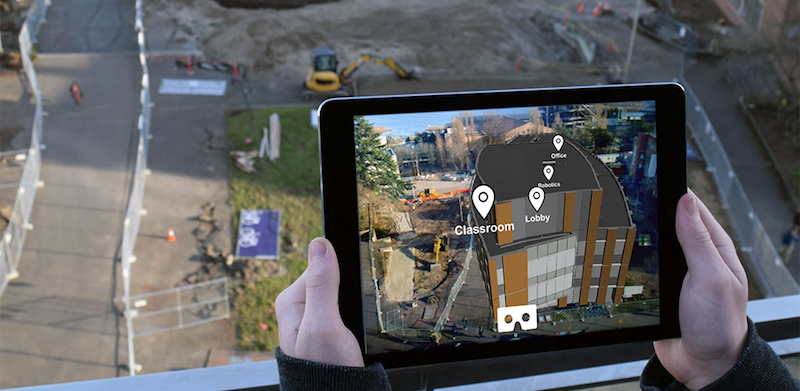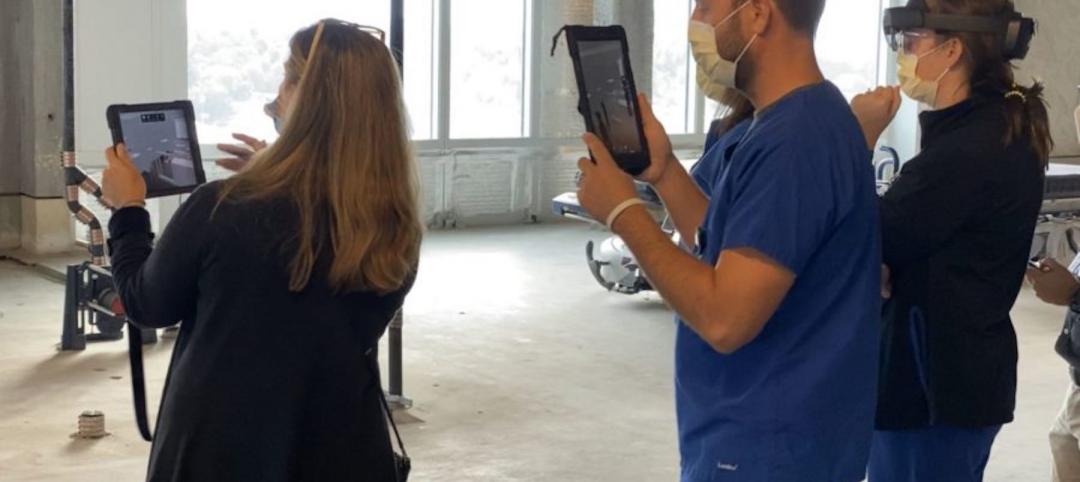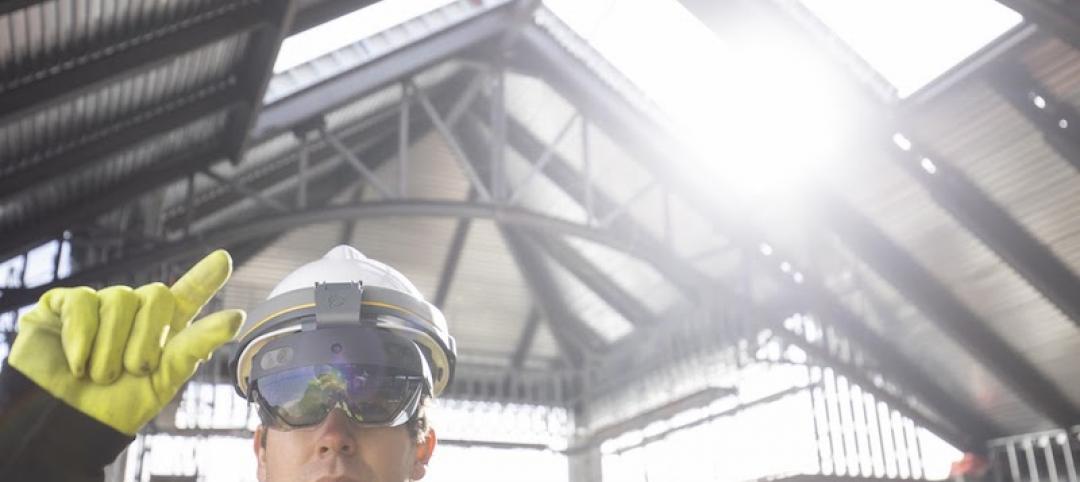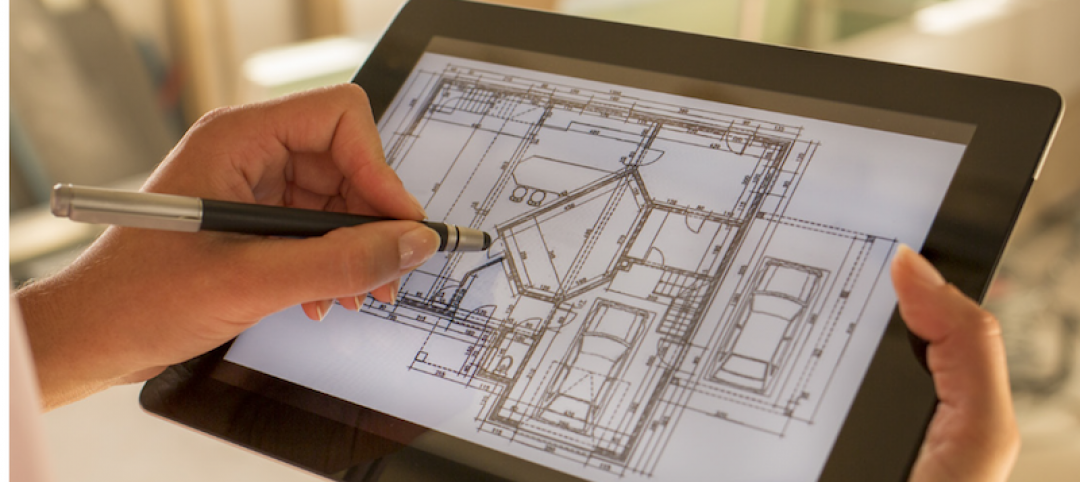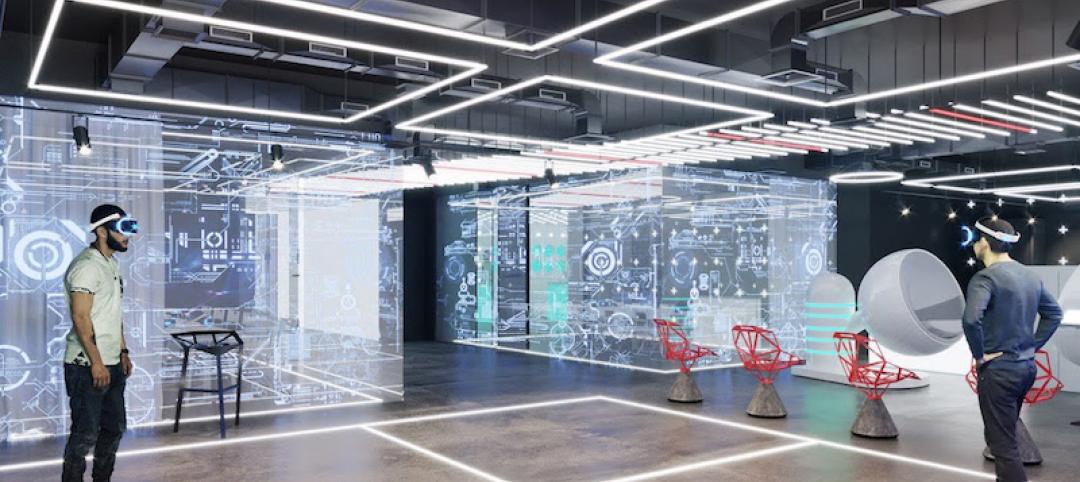Mortenson Construction has been in the vanguard of AEC firms using virtual reality as a tool for designing and building.
As far back as 2000, Mortenson’s Seattle office leaned on virtual design and construction modeling for the Frank Gehry-designed Walt Disney Concert Hall in Los Angeles.
More recently, the firm applied a technology it developed called Computerized Automatic Virtual Environment—CAVE for short—that, in 2013, helped the Building Team on the Pegula Ice Arena at Penn State University identify changes during the design stage, thereby averting $475,000 in costs. VR also helped shave $1.7 million in costs from the construction of the new Atlanta Braves stadium.
For the past 18 months, the firm's Immersive Technology group has been exploring possible construction-related opportunities for augmented reality (AR). Last year, Mortenson was among the first companies to partner with Daqri to test the application of its augmented reality-smart work helmet for construction jobsites. And in March, Mortenson went live with what it’s claiming is a first-of-its-kind AR mobile app that allows users to “see” what the second building of the Paul G. Allen Center for Computer Sciences and Engineering at the University of Washington in Seattle will look like, many months before its scheduled completion in January 2019.
Last January, the university’s Board of Regents authorized the start of construction for the 135,000-sf second building, which will be a much-needed addition to the Center where, since its first building opened in 2003, has seen its undergraduate and graduate computer science and engineering students increase by 50%, as has its faculty. UW reports that it currently has room for only 40% of the students who satisfy prerequisites and apply for computer science or computer engineering majors.
Mortenson was involved in the construction of the Center’s first building.
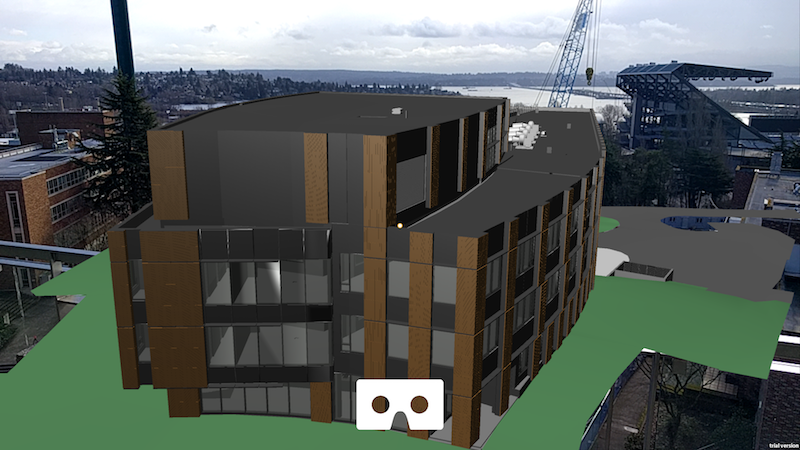
The AR app was developed to create excitement around this 135,000-sf building, which UW needs desperately to accommodate what has been a significant increase in students who want to major in computer science and engineering. Image: Mortenson Construction
Marc Kinsman, Mortenson’s Immersive Technology Developer, led the in-house team that developed the app. He says its purpose is to generate excitement about this project among the University of Washington community during construction. (He notes that the university removed a popular thoroughfare to “squeeze in” the new building, and anticipated some blowback from students and faculty.) The new AR mobile app, which is available for download onto iPhone and Android devices, lets users point their smartphones at the construction site on campus, or at a printed handout, to see a digital representation of the future building. Users can experience the exterior via AR, and then use VR to delve deeper into the building’s main lobby, workroom, robotics lab, and offices.
This building will include a 250-person lecture hall, seminar rooms, and conference facilities, as well as classrooms, lab space, and workrooms for faculty, students, and researchers.
“This window presents a tremendous opportunity to engage the public,” says Kinsman, who adds that VR and AR are “vast improvements” over traditional public engagement methods such as flyers, signage, or even websites. So far, the number of downloads has been modest, but Kinsman attributes that to a lack of marketing in the initial rollout.
That being said, this project has already attracted considerable attention. Its $105 million price tag will be funded by public and private sources that include Microsoft ($20 million), the state of Washington ($32.5 million), the University of Washington ($9 million), Amazon and Google ($10 million each), and Zillow ($5 million).
Kinsman says that Mortenson is planning to make available the AR app for future projects that include corporate campuses in Seattle and Portland, Ore.
Related Stories
Virtual Reality | Feb 27, 2023
Surfing the Metaversity: The future of online learning?
SmithGroup's tour of the Metaversity gives us insight on bringing together physical and virtual campuses to create a cohesive institution.
Arenas | Feb 23, 2023
Using data to design the sports venue of the future
Former video game developer Abe Stein and HOK's Bill Johnson discuss how to use data to design stadiums and arenas that keep fans engaged and eager to return.
Augmented Reality | Jan 27, 2023
Enhancing our M.O.O.D. through augmented reality therapy rooms
Perkins Eastman’s M.O.O.D. Space aims to make mental healthcare more accessible—and mental health more achievable.
Virtual Reality | Dec 12, 2022
Supplementing workplace connections through digital knowledge networks
Zachary Wassenberg of Burns & McDonnell breaks down three applications for digital knowledge networks: training, libraries, and instructions.
Augmented Reality | Jun 22, 2022
Not just for POKÉMON GO anymore: how augmented reality is transforming architecture
By solving a long-standing communication problem, Augmented Reality (AR) is poised to make architecture quicker, nimbler, and more cost effective.
AEC Tech Innovation | Oct 7, 2021
How tech informs design: A conversation with Mancini's Christian Giordano
Mancini's growth strategy includes developing tech tools that help clients appreciate its work.
Augmented Reality | Mar 7, 2019
Trimble unveils new mixed-reality device with Microsoft HoloLens 2 technology
The wearable device is hard hat compatible.
BIM and Information Technology | Jan 10, 2019
'BIM to AR' comes to the masses
Could new technology that simplifies the transfer of BIM models to augmented reality push AEC firms to go all in on extended reality?
Building Technology | Dec 18, 2018
Data and analytics are becoming essential for EC firms competing to rebuild America’s infrastructure
A new paper from Deloitte Consulting advises companies to revise their strategies with an eye toward leveraging advanced technologies.
Augmented Reality | Nov 9, 2018
Is this the future of amusement parks?
The concept will be presented in Orlando at the IAAPA Attractions Expo.


